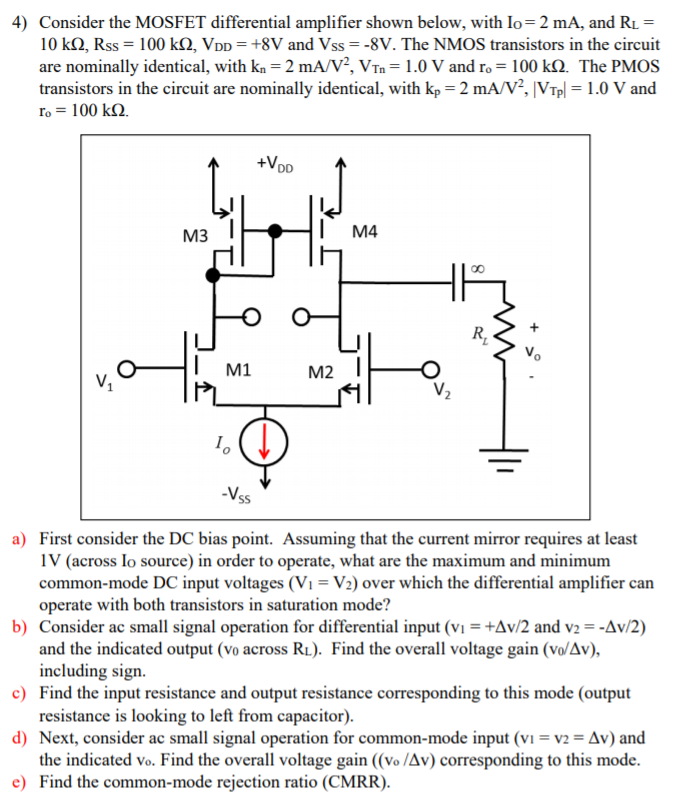Consider the MOSFET differential amplifier shown below, with IO = 2 mA, and RL = 10 kΩ, RSS = 100 kΩ, VDD = +8 V and VSS = −8 V. The NMOS transistors in the circuit are nominally identical, with kn = 2 mA/V2, VTnn = 1.0 V and ro = 100 kΩ. The PMOS transistors in the circuit are nominally identical, with kp = 2 mA/V2, |VTp| = 1.0 V and ro = 100 kΩ. a) First consider the DC bias point. Assuming that the current mirror requires at least IV (across Io source) in order to operate, what are the maximum and minimum common-mode DC input voltages (V1 = V2) over which the differential amplifier can operate with both transistors in saturation mode? b) Consider ac small signal operation for differential input (v1 = +Δv/2 and v2 = −Δv/2) and the indicated output (v0 across RL). Find the overall voltage gain (v0/Δv), including sign. c) Find the input resistance and output resistance corresponding to this mode (output resistance is looking to left from capacitor). d) Next, consider ac small signal operation for common-mode input (v1 = v2 = Δv) and the indicated vo. Find the overall voltage gain ((vo/Δv) corresponding to this mode. e) Find the common-mode rejection ratio (CMRR).
